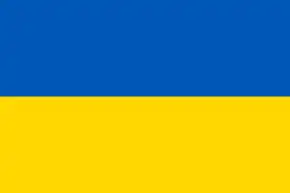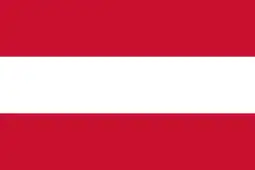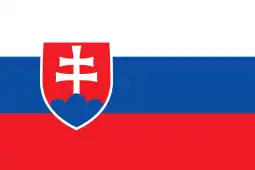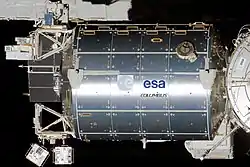The European Astronaut Corps is a unit of the European Space Agency (ESA) that selects, trains, and provides astronauts as crew members on U.S. and Russian space missions. The corps has 13 active members, able to serve on the International Space Station (ISS). The European Astronaut Corps is based at the European Astronaut Centre in Cologne, Germany. They can be assigned to various projects both in Europe (at ESTEC, for instance) or elsewhere in the world, at NASA Johnson Space Center or Star City.
Current members
As of 2023 are six active members of the European Astronaut Corps. Five of the six were selected in 2009, and one was selected in 2015.
| Name |
Country |
Selection |
Time in space |
Missions |
|---|---|---|---|---|
| Samantha Cristoforetti | 2009 ESA Group | 370d 5h 45m | Soyuz TMA-15M (Expedition 42/43), Crew-4 (Expedition 67/68) | |
| Alexander Gerst | 2009 ESA Group | 362d 1h 50m | Soyuz TMA-13M (Expedition 40/41), Soyuz MS-09 (Expedition 56/57) | |
| Andreas Mogensen | 2009 ESA Group | 9d 20h 14m | Soyuz TMA-18M/16M, Crew-7 (Expedition 69/70) | |
| Luca Parmitano | 2009 ESA Group | 366d 23h 1m | Soyuz TMA-09M (Expedition 36/37), Soyuz MS-13 (Expedition 60/61) | |
| Thomas Pesquet | 2009 ESA Group | 396d 11h 34m | Soyuz MS-03 (Expedition 50/51), Crew-2 (Expedition 65/66) | |
| Matthias Maurer | 2015 ESA Group | 176d 2h 39m | Crew-3 (Expedition 66/67) | |
| Marcus Wandt | 2022 ESA Group (Project) | Currently in space | Axiom Mission 3 |
All of the current members of the corps have flown to space and have visited the ISS. French astronaut Thomas Pesquet is the member of the corps who has accumulated the most time in space with 396 days, 11 hours and 34 minutes. He is the record holder for all the European astronauts in history. The corps currently includes one woman, Samantha Cristoforetti, who formerly held the record for the longest spaceflight by a woman. Timothy Peake, a member of the 2009 group, retired in 2023.[1]
In June 2023, Marcus Wandt, originally a reserve astronaut, was selected for Axiom Space mission and transitioned to "project" astronaut.[2] The same fate was reserved to Sławosz Uznański.
2009 Group
On 3 April 2008, ESA director general Jean-Jacques Dordain announced that recruiting for a new class of European astronauts will start in the near future.[3] The selection program for 4 new astronauts was launched on 19 May 2008 with applications due by 16 June 2008 so that final selection would be due spring 2009.[4] Almost 10,000 people registered as astronaut candidates as of 18 June 2008. 8,413 fulfilled the initial application criteria. From these 918 were chosen to take part in the first stage of psychological testing which led to 192 candidates on 24 September 2008. After two stage psychological tests 80 candidates continued on to medical evaluation in January–February 2009. 40 or so candidates head to formal interviews to select four new members to European Astronaut Corps.[4]
2022 Group
Recruitment for the 2022 ESA Astronaut Group took place over 2021-22 and added five "career" astronauts as well as for the first time a "reserve pool" of 11 astronaut candidates, and also a person with a physical disability through the "parastronaut feasibility project".[5][6]
In June 2023, Marcus Wandt, originally a reserve astronaut, was proposed for an Axiom Space mission and transitioned to "project" astronaut.[7] The same fate was reserved to Sławosz Uznański.
| Name | Country | Role |
|---|---|---|
| Sophie Adenot[8] | Career astronaut | |
| Pablo Álvarez Fernández[9] | Career astronaut | |
| Rosemary Coogan[10] | Career astronaut | |
| Raphaël Liégeois[11] | Career astronaut | |
| Marco Alain Sieber[12] | Career astronaut | |
| John McFall[13] | Parastronaut | |
| Meganne Christian[14] | Astronaut reserve | |
| Anthea Comellini[15] | Astronaut reserve | |
| Sara García Alonso[16] | Astronaut reserve | |
| Andrea Patassa[17] | Astronaut reserve | |
| Carmen Possnig[18] | Astronaut reserve | |
| Arnaud Prost[19] | Astronaut reserve | |
| Amelie Schoenenwald[20] | Astronaut reserve | |
| Aleš Svoboda[21] | Astronaut reserve | |
| Sławosz Uznański[22] | Project astronaut | |
| Marcus Wandt[23] | Project astronaut | |
| Nicola Winter[24] | Astronaut reserve |
The funding by NASA and Russia of the International Space Station is currently planned to end in 2030. Thanks to their involvement with NASA's Orion programme, ESA will receive three flight opportunities for European astronauts to the Lunar Gateway.[25]
Former members
There are 18 former members of the ESA astronaut corps.[26]
Some ESA astronauts were selected by other European agencies and then enrolled into the European Astronaut Corps in 1998.
European astronauts outside of ESA
Interkosmos
Ten Europeans became astronauts within the Soviet Union's Interkosmos program, which allowed citizens of allied nations to fly missions to the Salyut 6, Salyut 7 and Mir space station.
Space Shuttle
NASA trained and flew astronauts from allied nations on the Space Shuttle, especially as payload specialists for scientific missions such as Spacelab. Prior to the foundation of the ESA astronaut corps, both the French CNES and the German DLR had selected their own rosters of astronauts, notably in preparation for the introduction of the ISS. The following people flew on various Shuttle missions.[lower-alpha 1]
 Patrick Baudry
Patrick Baudry Jean-Jacques Favier
Jean-Jacques Favier.svg.png.webp) Dirk Frimout
Dirk Frimout Reinhard Furrer
Reinhard Furrer Leonid Kadeniuk
Leonid Kadeniuk Franco Malerba
Franco Malerba Ulrich Walter
Ulrich Walter
- ↑ Other European astronauts who flew on the Space Shuttle were transferred to the ESA astronaut corps, and are listed above.
Russian Mir missions
The following people flew on missions to Mir under agreements between their nations and Russia.
Space Shuttle missions
Astronauts from the European Astronaut Corps participated in several NASA Space Shuttle missions before the ISS era, in particular as Spacelab payload specialists. NASA considered the full-time ESA astronauts as payload specialists, but offered some the opportunity to train with its own astronauts and become NASA mission specialists.[27] (This list excludes missions to Mir or the ISS)
As Payload Specialists
As Mission Specialists
Missions to the Mir space stations
Astronauts from Europe have flown to Mir both on board Soyuz vehicles (as part of the Euromir programme) or on board the Space Shuttle.[28]
- Jean-Loup Chrétien – Aragatz (1988)
 France
France - Helen Sharman – Project Juno (1991)
 UK
UK - Franz Viehböck – Austromir '91 (1991)
 Austria
Austria - Klaus-Dietrich Flade – Mir '92 (1992)
 Germany
Germany - Michel Tognini – Antarès (1992)
 France
France - Jean-Pierre Haigneré – Altair (1993)
 France
France - Ulf Merbold – Euromir '94 (1994)
 Germany
Germany - Thomas Reiter – Euromir '95 (1995)
 Germany
Germany - Claudie Haigneré – Cassiopée (1996)
 France
France - Reinhold Ewald – Mir '97 (1997)
 Germany
Germany - Jean-Loup Chrétien – STS-86 (1997)
 France
France - Léopold Eyharts – Pégase (1998)
 France
France - Jean-Pierre Haigneré – Perseus (1999)
 France
France - Ivan Bella – Stefanik (1999)
 Slovakia
Slovakia
Missions to the International Space Station
European astronauts to have visited the ISS are:
| Astronaut | Agency | Mission | Launch | Return | Expedition | Launch Date | Return Date | Note |
|---|---|---|---|---|---|---|---|---|
| ESA | STS-100 | STS-100 | Expedition 2 | 19 Apr 2001 | 1 May 2001 | Flight 6A with MPLM Raffaello, visited Expedition 2 crew | ||
| CNES | Andromède | Soyuz TM-33 | Soyuz TM-32 | Expedition 3 | 21 Oct 2001 | 31 Oct 2001 | Visited Expedition 3 crew | |
| ESA | Marco Polo | Soyuz TM-34 | Soyuz TM-33 | Expedition 4 | 25 Apr 2002 | 5 May 2002 | Visited Expedition 4 crew | |
| CNES | STS-111 | STS-111 | Expedition 4/5 | 5 Jun 2002 | 19 Jun 2002 | ISS Assembly Flight UF-2, launched with Expedition 5 crew and landed with Expedition 4 crew | ||
| ESA | Odissea | Soyuz TMA-1 | Soyuz TM-34 | Expedition 5 | 30 Oct 2002 | 10 Nov 2002 | Visited Expedition 5 crew | |
| ESA | Cervantes | Soyuz TMA-3 | Soyuz TMA-2 | Expedition 7/8 | 18 Oct 2003 | 28 Oct 2003 | Launched with Expedition 8 crew landed with Expedition 7 crew, | |
| ESA | DELTA | Soyuz TMA-4 | Soyuz TMA-3 | Expedition 8/9 | 19 Apr 2004 | 30 Apr 2004 | Launnched with Expedition 8 crew, landed with Expedition 8 crew | |
| ESA | Eneide | Soyuz TMA-6 | Soyuz TMA-5 | Expedition 10/11 | 15 Apr 2005 | 24 Apr 2005 | Launched with Expedition 11 crew, landed with Expedition 10 crew | |
| ESA | Astrolab | STS-121 | STS-116 | Expedition 13/14 | 4 Jul 2006 | 22 Dec 2006 | ISS Assembly Flight ULF 1.1, first European to live on the ISS as flight engineer on Expedition 13 and 14 | |
| ESA | Celsius | STS-116 | STS-116 | Expedition 14 | 10 Dec 2006 | 22 Dec 2006 | ISS Assembly Flight 12A.1, visited Expedition 14 crew | |
| ESA | Esperia | STS-120 | STS-120 | Expedition 16 | 23 Oct 2007 | 7 Nov 2007 | ISS Assembly Flight 10A, visited Expedition 16 crew | |
| ESA | Columbus | STS-122 | STS-122 | Expedition 16 | 7 Feb 2008 | 20 Feb 2008 | ISS Assembly Flight 1E, visited Expedition 16 crew | |
| ESA | Columbus | STS-122 | STS-123 | Expedition 16 | 7 Feb 2008 | 27 Mar 2008 | ISS Assembly Flight 1E, second European to live on the ISS as flight engineer on Expedition 16 | |
| ESA | OasISS | Soyuz TMA-15 | Soyuz TMA-15 | Expedition 20/21 | 27 May 2009 | 1 Dec 2009 | Flight engineer on Expedition 20, first European to command the ISS as commander of Expedition 21 | |
| ESA | AlISSé | STS-128 | STS-128 | Expedition 20 | 29 Aug 2009 | 12 Sep 2009 | ISS Assembly Flight 17A, visited Expedition 20 crew | |
| ESA | MagISStra | Soyuz TMA-20 | Soyuz TMA-20 | Expedition 26/27 | 15 Dec 2010 | 24 May 2011 | Flight engineer on Expedition 26 and 27 | |
| ESA | DAMA | STS-134 | STS-134 | Expedition 27/28 | 16 May 2011 | 1 Jun 2011 | Visited Expedition 27 and 28 | |
| ESA | PromISSe | Soyuz TMA-03M | Soyuz TMA-03M | Expedition 30/31 | 21 Dec 2011 | 1 Jul 2012 | Flight engineer on Expedition 30 and 31 | |
| ESA | Volare | Soyuz TMA-09M | Soyuz TMA-09M | Expedition 36/37 | 28 May 2013 | 11 Nov 2013 | Flight engineer on Expedition 36 and 37, first member of the 2009 ESA astronaut class to fly | |
| ESA | Blue Dot | Soyuz TMA-13M | Soyuz TMA-13M | Expedition 40/41 | 28 May 2014 | 10 Nov 2014 | Flight engineer on Expedition 40 and 41 | |
| ESA | Futura | Soyuz TMA-15M | Soyuz TMA-15M | Expedition 42/43 | 23 Nov 2014 | 11 Jun 2015 | Flight engineer on Expedition 42 and 43, Longest uninterrupted spaceflight of a European astronaut | |
| ESA | IrISS[29] | Soyuz TMA-18M | Soyuz TMA-16M | Expedition 44 | 2 Sep 2015 | 12 Sep 2015 | Visited Expedition 44 crew, first Danish astronaut | |
| ESA | Principia[30] | Soyuz TMA-19M | Soyuz TMA-19M | Expedition 46/47 | 15 Dec 2015 | 18 June 2016 | Flight engineer on Expedition 46 and 47 | |
| ESA | Proxima[31] | Soyuz MS-03 | Soyuz MS-03 | Expedition 50/51 | 17 Nov 2016 | 16 May 2017 | Flight engineer on Expedition 50 and 51 | |
| ESA | Vita | Soyuz MS-05 | Soyuz MS-05 | Expedition 52/53 | 28 July 2017 | 14 December 2017 | Flight engineer on Expedition 52 and 53 | |
| ESA | Horizons | Soyuz MS-09 | Soyuz MS-09 | Expedition 56/57 | 6 June 2018 | 20 December 2018 | Flight engineer on Expedition 56, second European to command the ISS as commander of Expedition 57 | |
| ESA | Beyond | Soyuz MS-13 | Soyuz MS-13 | Expedition 60/61 | 20 July 2019 | 6 February 2020 | Flight engineer on Expedition 60, third European to command the ISS as commander of Expedition 61 | |
| ESA | Alpha | SpaceX Crew-2 | SpaceX Crew-2 | Expedition 65/66 | 23 April 2021 | 9 November 2021 | Flight engineer on Expedition 65, fourth European to command the ISS as commander of the final part of Expedition 65 and the first part of Expedition 66. | |
| ESA | Cosmic Kiss | SpaceX Crew-3 | SpaceX Crew-3 | Expedition 66/67 | 11 November 2021 | 6 May 2022 | Flight engineer on Expedition 66 and 67 | |
| ESA | Minerva | SpaceX Crew-4 | SpaceX Crew-4 | Expedition 67/68 | 27 Apr 2022 | 14 Oct 2022 | Flight engineer on Expedition 67, fifth European to command the ISS as commander of the first part of Expedition 68. | |
| ESA | Huginn[33] | SpaceX Crew-7 | SpaceX Crew-7 | Expeditions 69/70 | 26 August 2023 | Q1 2024 | First non-American astronaut to pilot a United States spacecraft. Sixth European to command the ISS as commander of the first part of Expedition 70. | |
| ESA (Project) | Muninn[34] | Axiom Mission 3 | Axiom Mission 3 | Visiting | 18 January 2024[35] | Q1 2024 | First ESA Astronaut on a private mission to ISS, first from the 2022 European Space Agency Astronaut Group to fly in space, First ESA project astronaut, fastest-trained astronaut in history after selection to fly into orbit. |
Future missions to the International Space Station
Future European astronauts to the ISS are:
| Astronaut | Agency | Mission | Launch | Return | Expedition | Launch Date | Return Date | Note |
|---|---|---|---|---|---|---|---|---|
See also
References
- ↑ "Astronaut Tim Peake assumes ESA ambassadorial role". www.esa.int. Retrieved 20 January 2023.
- ↑ "N° 28–2023: ESA proposes Marcus Wandt from Sweden to fly on a future Axiom space mission". European space agency. 15 June 2023. Retrieved 15 June 2023..
- ↑ Clark, Stephen (3 April 2008). "Europe's new cargo freighter safely docks to space station". Spaceflight Now. Retrieved 6 March 2016.
- 1 2 "Closing in on new astronauts". ESA. 24 September 2008. Retrieved 6 March 2016.
- ↑ "Astronaut selection 2021-22 FAQs". www.esa.int. Retrieved 26 May 2021.
- ↑ "ESA presents new generation of ESA astronauts". www.esa.int. Retrieved 23 November 2022.
- ↑ "N° 28–2023: ESA proposes Marcus Wandt from Sweden to fly on a future Axiom space mission". European space agency. 15 June 2023. Retrieved 15 June 2023..
- ↑ "Sophie Adenot". www.esa.int. Retrieved 23 November 2022.
- ↑ "Pablo Álvarez Fernández". www.esa.int. Retrieved 23 November 2022.
- ↑ "Rosemary Coogan". www.esa.int. Retrieved 23 November 2022.
- ↑ "Raphaël Liégeois". www.esa.int. Retrieved 23 November 2022.
- ↑ "Marco Alain Sieber". www.esa.int. Retrieved 23 November 2022.
- ↑ "John McFall". www.esa.int. Retrieved 23 November 2022.
- ↑ "Meganne Christian". www.esa.int. Retrieved 23 November 2022.
- ↑ "Anthea Comellini". www.esa.int. Retrieved 23 November 2022.
- ↑ "Sara García Alonso". www.esa.int. Retrieved 23 November 2022.
- ↑ "Andrea Patassa". www.esa.int. Retrieved 23 November 2022.
- ↑ "Carmen Possnig". www.esa.int. Retrieved 23 November 2022.
- ↑ "Arnaud Prost". www.esa.int. Retrieved 23 November 2022.
- ↑ "Amelie Schoenenwald". www.esa.int. Retrieved 23 November 2022.
- ↑ "Aleš Svoboda". www.esa.int. Retrieved 23 November 2022.
- ↑ "Sławosz Uznański". www.esa.int. Retrieved 23 November 2022.
- ↑ "Marcus Wandt". www.esa.int. Retrieved 23 November 2022.
- ↑ "Nicola Winter". www.esa.int. Retrieved 23 November 2022.
- ↑ Positive signs for Europe as ESA goes forward to the Moon
- ↑ "European astronauts in new functions". ESA. 2 August 2019. Retrieved 22 September 2019.
- ↑ Croft, Melvin; Youskauskas, John (2019). Come Fly with Us: NASA's Payload Specialist Program. Outward Odyssey: a People's History of Spaceflight. University of Nebraska Press. pp. 61–63. ISBN 9781496212252.
- ↑ "European Manned Spaceflight Patches" (PDF). ESA. 29 October 2009. Retrieved 15 December 2010.
- ↑ "The iriss name and logos". ESA. 25 November 2015. Retrieved 6 March 2016.
- ↑ "ESA mission name for astronaut Tim Peake: Principia F". ESA. 18 July 2014. Retrieved 6 March 2016.
- ↑ "Thomas Pesquet closer to space with mission name Proxima". ESA. 12 November 2015. Retrieved 6 March 2016.
- ↑ "Third spaceflight for astronaut Paolo Nespoli". ESA. 30 July 2015. Retrieved 6 March 2016.
- ↑ "Introducing Huginn". ESA. 18 August 2022.
- ↑ "Muninn Mission Patch and Name". ESA. 16 June 2023.
- ↑ https://www.axiomspace.com/news/ax3-astronaut-crew
External links


.jpg.webp)

.jpg.webp)